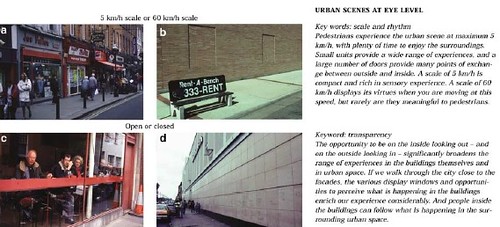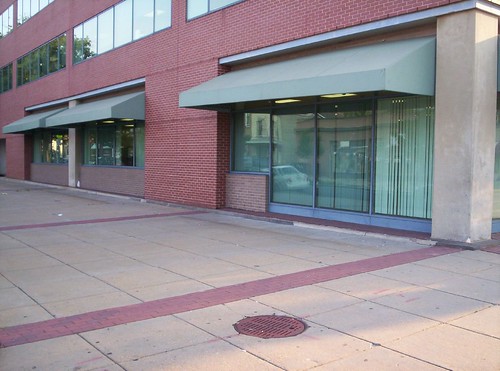Been there, done that: big projects and the cities

DC/USA retail center, 14th Street NW, Columbia Heights, Washington, DC
Forbes has a blog entry about how cities are focused on attracting big projects, and how most don't succeed. See "Malls, Walmarts, and Stadiums: How Cities Are Shackled to Big Projects."
For all the talk of Jane Jacobs' impact on urban planning (and she has been very well interpreted through the books The Living City and Cities: Back from the Edge by Roberta Brandes Gratz--Gratz calls the focus on big projects "project planning"), cities are still wedded to big projects.
From Alex Marshall's blog:
There are two ways to try to revive an old downtown, says Roberta Brandes Gratz. Only one of them works.
The first way is to spend a lot of money, taxpayer money, on stadiums, aquariums, science centers and mammoth public-private partnerships like enclosed shopping malls. (Sound familiar?)
The other way is to look carefully at what is already there, and to nurture its revitalization. Avoid big projects. Find ways to plant small businesses and new residents into old buildings and streets as if you were injecting favorable spores into a vat of cheese.
But this "finding" is nothing new. Umm, Times Square, Harlem/USA, DC/USA, Mall of America, any stadium project, including the football stadium wending its way through LA and the arena project in Sacramento, etc.
Part of the problem, although I haven't gotten around to reading Seeing Like a State: How Certain Schemes to Improve the Human Condition Have Failed by James Scott, has to do with how large institutions, in this case city and county governments, are most comfortable dealing with other large organizations and projects. From a book review of Scott's book:
One of the most important common factors that Scott found in these schemes is what he refers to as a high modernist ideology. In simplest terms, it is an extremely firm belief that progress can and will make the world a better place. But "scientific" theories about the betterment of life often fail to take into account "the indispensable role of practical knowledge, informal processes, and improvisation in the face of unpredictability" that Scott views as essential to an effective society. What high modernism lacks is metis, a Greek word which Scott translates as "the knowledge that can only come from practical experience." Although metis is closely related to the concept of "mutuality" found in the anarchist writings of, among others, Kropotkin and Bakunin, Scott is careful to emphasize that he is not advocating the abolition of the state or championing a complete reliance on natural "truth." He merely recognizes that some types of states can initiate programs which jeopardize the well-being of all their subjects.
The problem with most big projects is that they are overly ambitious and in their way, anti-city, because they tend to be focused on land access-urban location, but aren't interested in harvesting and extending what we would think of as pro-city ideas, that is urban design and placemaking characteristics.
Anti-city design practices of big projects
In DC, the general failure of the Georgetown Park Mall is a good example of this. Malls are designed to scoop people off the street and keep them inside. People go to Georgetown to shop sure, but they go to participate in the vitality of the active street. It should be no surprise that the stores in Georgetown Park Mall that are successful actually front M Street and have their own entrances onto the street.
In some respects, Verizon Center is an example of this, although it helps the area around it some despite itself. First, the spaces that are supposed to support commercial activity aren't designed to complement and connect to the street. They have the same failure that the mall does.
Second, most sporting events are scheduled pretty early, so that people have to go there right after work, and they don't have the time to walk around and shop and eat at nearby establishments. Instead they go directly to the arena, and spend their money on food etc. inside. That's great for the arena owners, but not so great for the commercial district around it. On the other hand, for events on Saturday and Sunday, because people have more time, there is a lot more shopping, eating and drinking activity at places in and around Downtown.
Still, there is a place for big projects in urban revitalization generally and in neighborhood revitalization specifically
The reality is that cities probably need to do both, focus on ground up activities, but complemented by appropriate big projects--but ensuring that the big projects in their way are also pro-city in terms of urban design rather than being anti-city.
For example, what I mean by this is that I was opposed to the DC/USA retail project, including the 1000 parking spaces even though it was absolutely on top of a subway station. The reality is that for the most part the project is wildly successful--according to someone who would know, the Target Store in DC/USA is the #2 store on the East Coast in terms of annual sales--that's quite good.
While I am right that the parking was unnecessary (2/3 goes unused) and that there was inadequate general planning for the commercial district beyond the creation of DC/USA--they never planned for an act beyond DC/USA so the commercial district is only focused on convenience goods and has limited entertainment options so it won't grow much or meet a broader set of needs--I was absolutely wrong about the city not needing to seek "chain" retail, that it should have only focused on independent retail.
DC/USA is a key anchor in Columbia Heights, although the subway station was key, as was the development of multiunit housing proximate to the subway station. It demonstrates the need for a balanced strategy for retail redevelopment within center cities.
Labels: commercial district revitalization planning, Jane Jacobs, urban design/placemaking, urban revitalization





1 Comments:
This post is a great resource for so many blog things. Thanks for the info.
Post a Comment
<< Home